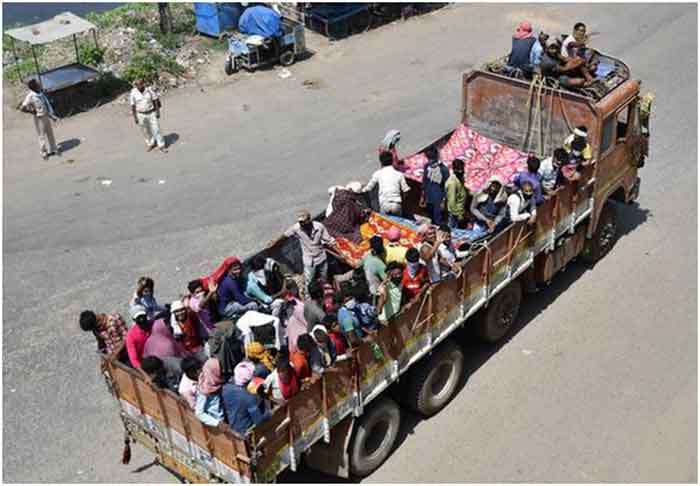
Abstract
There are so many articles, reports and research on covid-19 (corona) by different institutions, researchers and banks of various countries. There are economic research on it there are physiological researches on it and in coming time there will be more psycological researches also conduct on it.
But as we know to prevent to cure or to procure for any situations weather it is a small contingency for a nation or a big contingency or a pandemic like “CORONA”. The very first thought comes in our mind is how strong is our pecuniary system. Is the economy of our country being strong enough to handle the situation? And not only the current situation but also the aftershock of this pandemic too?
The novel coronavirus is both something old and something new. As usual, the pandemic is both an aggregate demand and an aggregate supply shock, but the fact that it hit China first and hardest, and the supply chain implications of this, make it something new. That makes it difficult to address with standard macroeconomic tools. The world is now facing a humanitarian crisis. The COVID-19 pandemic has created an uncertainty worse than a war in many respects. In fact, many have termed it as World War III.
Discussion
Our nation faces a humongous task of saving the “lives” and “livelihood” of people. Rightly, we have given priority to saving lives by taking extreme steps of “social distancing” to flatten the curve. The complete lock down of 21 days in India and which is further extended for 19 days is aimed at this. As we do this, livelihoods are at peril, and it has triggered an exodus of migrant workers. Unless we minimize the effects of the simultaneous economic disruptions, it will turn into an unimaginable economic pandemic too. This lockdown and social distancing are not the permanent solution of this problem. It only delayed the situation, or we can say this help us to holding the ball game. We cannot count on this lockdown as a cure of this pandemic.
Measuring these macroeconomic uncertainties and designing a “COVID-19 policy response” package is a daunting task. This uncertainty has come as a double whammy for the Indian economy, which was continuously slowing down for a couple of years “structurally” with no evidence of a V-shaped or U-shaped revival. Some economists discuss the possibility that this crisis will be U-shaped rather than V-shaped, as has been the case for similar epidemics and other recent supply shocks. Their point is that the linkages discussed will affect different nations differently. It may be a V shape, i.e. short and sharp with full recovery to the old growth path for some sectors and nations, but much more lingering for others. This suggest that in aggregate it could, at least for manufacturing, look more like a U-shape in the global data.
For services, the shock will be; hard to recover, from so it may look more like an ‘L’. Growth drops for a while, and while it will resume eventually, there will be no catch up. People who skip a few restaurant meals, cinema outings, and holidays in the sun are unlikely to double-up on dining, movie-going and holidaymaking to catch up. The shock to tourism, transportation services, and domestic activities generally will not be recovered and domestic services also will bear the brunt of the virus outbreak.
The current situation reminds me of the world some seventy years ago. As the world plummeted into the Great Depression, advocates of the free markets said, “Not to worry; markets are self-regulating, and given time, economic prosperity will resume.” Never mind the misery of those whose lives are destroyed waiting for this so-called eventuality. Keynes argued that markets were not self-correcting, or not at least in a relevant time frame. (As he famously put it, “In the long run, we are all dead”.) unemployment could persist for years, and government intervention was required. Keynes was pilloried – attacked as a socialist, a critic of the market. Yet in a sense, Keynes was intensely conservative. He had a fundamental belief in the markets: if only government could correct this one failure, the economy would be able to function reasonably efficiently. He did not want a wholesale replacement of the market system; but he knew that unless these fundamental problems were addressed, there would be enormous popular pressures. And Keynes’s medicine worked: since World War II, countries like The United States, following Keynisian prescriptions, have had fewer and shorter-lived downturns, and longer expansions than previously.
When we relate this incident with the current situation of the world, we realized that we are again in the verging on the same situation of global depression. Every nation tries to protect its economy and position in the market. Not a single country is out of its economic effect. the IMF predicted that “the Great Lockdown” will cause the worst global downturn since the Great Depression of the 1930s. Governments around the world have resorted to unprecedented monetary and fiscal policy measures to limit the adverse impact of COVID-19, both the unparalleled public health crisis and the macroeconomic crisis. The International Monetary Fund (IMF) has launched a policy tracker to help member countries to be informed about the experience of others in fighting the pandemic and the discretionary policies taken to help them combat the pandemic more effectively.
As Richmond Federal Reserve Bank president Tom Barkin said, “central banks can’t come up with vaccines.” But this pandemic is really, really different.
The International Monetary Fund (IMF) believes Asia’s fast-growing economies will “come to a standstill” due to the Covid-19 (coronavirus) pandemic, faring worse than during the 2008-9 global financial crisis or the 1997-98 Asian crash. The region will experience zero growth for the first time since the 1960s, said Chang Yong Rhee, director of the IMF’s Asia and Pacific Department, who forecast that the economic impact of the pandemic will be “severe, across the board, and unprecedented. He said Asia faces a crisis like no other due to the pandemic, which has killed over 136,000 people worldwide and prompted governments to impose lockdowns that have hampered commerce.
Conclusion
The macroeconomic uncertainty created by COVID-19 is hard to measure. The situation requires simultaneous policy interventions in terms of public health infrastructure, livelihood and humanitarian issues emanating from the inter-state migration crisis. Although India has announced iteratively the policy measures, more fiscal–monetary policy coordination is required to scale up the policy responses to “whatever it takes” to respond to this crisis. Innovative sources of financing the deficit, including “money financing of fiscal program.
But It’s too early to predict that what will happen in the future what kind of outcomes come after this pandemic. We can’t say all effects are negative there are some positive changes may also visible in future in aspect of nature. As our former President Dr. APJ Abdul Kalam said its very important in the area of any human research development “we should know not only how to handle the success also how to handle the failures”. “particularly in environment management because any task you do you have to come across the problem, problem should not become the captain of the individual or a project chief but the project chief should become the captain of the problems and defeat the problem and succeed”.
On the dark side, it could become an economic crisis of global dimensions and a long-lasting reversal of globalization. On the bright side, it could be the moment when policymakers manage a common crisis response. They might even manage to rebuild some trust and create a cooperative spirit that helps humanity tackle other common threats like climate change.
And with this I am ending my thoughts with a to be continued mode….
References:
Baldwin, R and B Weder di Mauro (2020), Economics in the Time of COVID-19, a VoxEU.org eBook, CEPR Press.
https://www.epw.in/journal/2020/15/commentary/covid-19-and-macroeconomic-uncertainty.html
https://voxeu.org/article/economics-time-covid-19-new-ebook
Bharti Sharma is a political commentator
SIGN UP FOR COUNTERCURRENTS DAILY NEWS LETTER














































